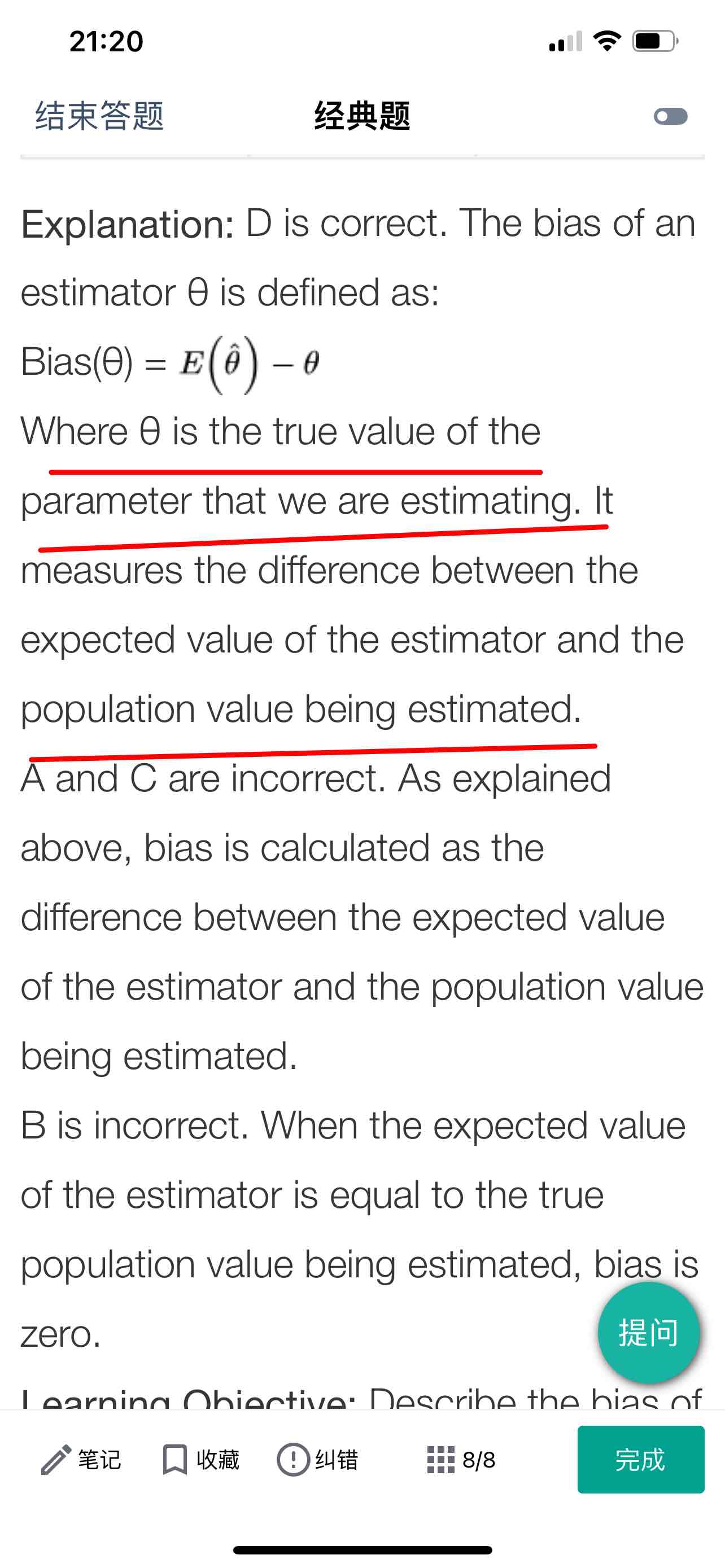NO.PZ2024030508000079
问题如下:
A financial risk analyst at a real estate firm is preparing a report on housing prices. The analyst compiles the summary statistics for a dataset with 25 observations and decides to use bias-corrected estimators of the parameters due to the sample size. Which of the following correctly describes the bias of an estimator?
选项:
A.The bias is typically calculated by taking the square of the deviation between two mean estimators.
B.The bias is greatest when the expected value of the estimator is equal to the true population value being estimated.
C.The bias is equal to the expected value of the estimator divided by the population value being estimated.
D.The bias is the difference
between the expected value of an estimator and the true value of the population
parameter.
解释:
Explanation: D is correct. The bias of an estimator θ is defined as:
Bias(θ) =
Where θ is the true value of the parameter that we are estimating. It measures the difference between the expected value of the estimator and the population value being estimated.
A and C are incorrect. As explained above, bias is calculated as the difference between the expected value of the estimator and the population value being estimated.
B is incorrect. When the expected value of the estimator is equal to the true population value being estimated, bias is zero.
Learning Objective: Describe the bias of an estimator and explain what the bias measures.
Reference: Global
Association of Risk Professionals. Quantitative Analysis. New York, NY:
Pearson, 2023, Chapter 5, Sample Moments [QA-5].

老师好,在课件讲到“the bias of an estimator”时,老师提到过西塔是总体均值,西塔cap是估计量的均值,但是看答案红色英文并不是这个意思,到底哪个是准确的呢?




